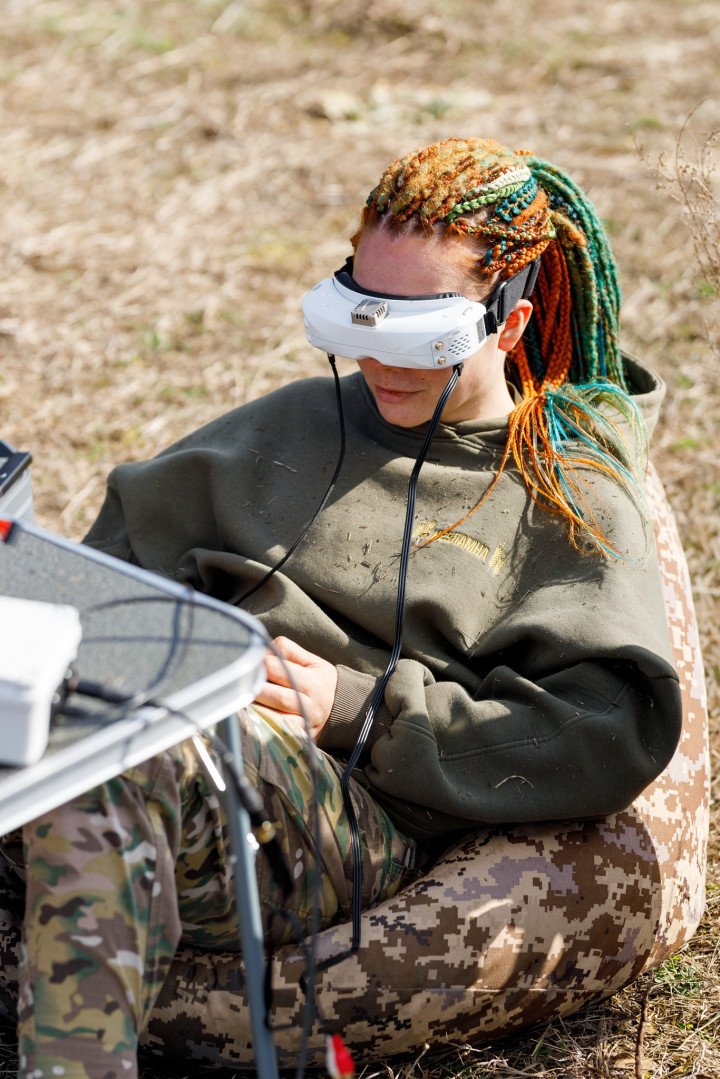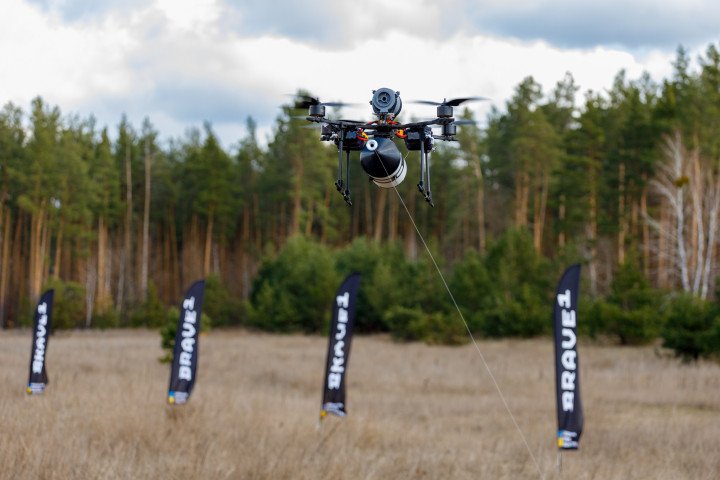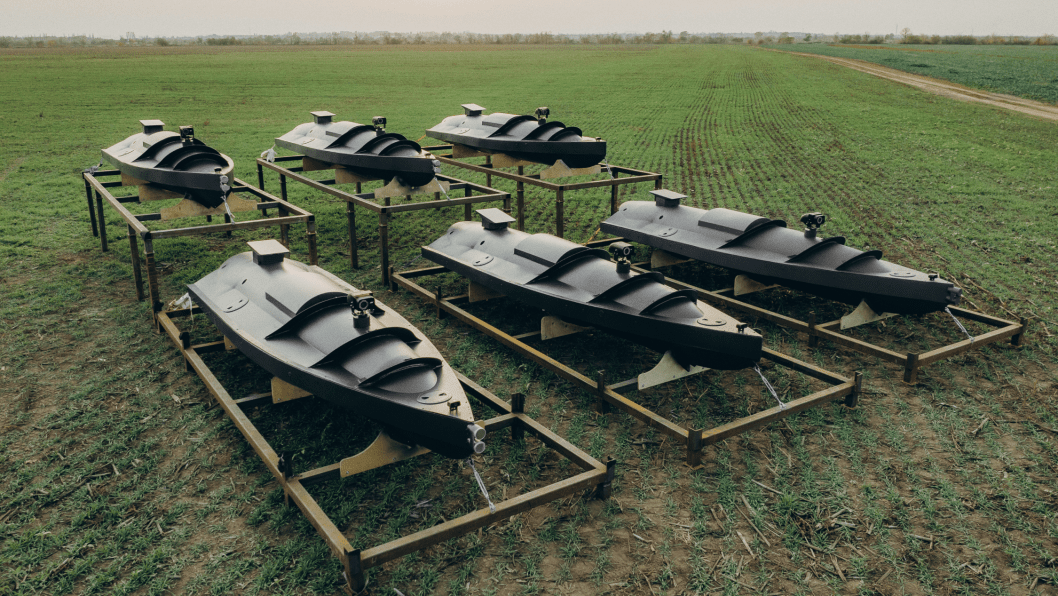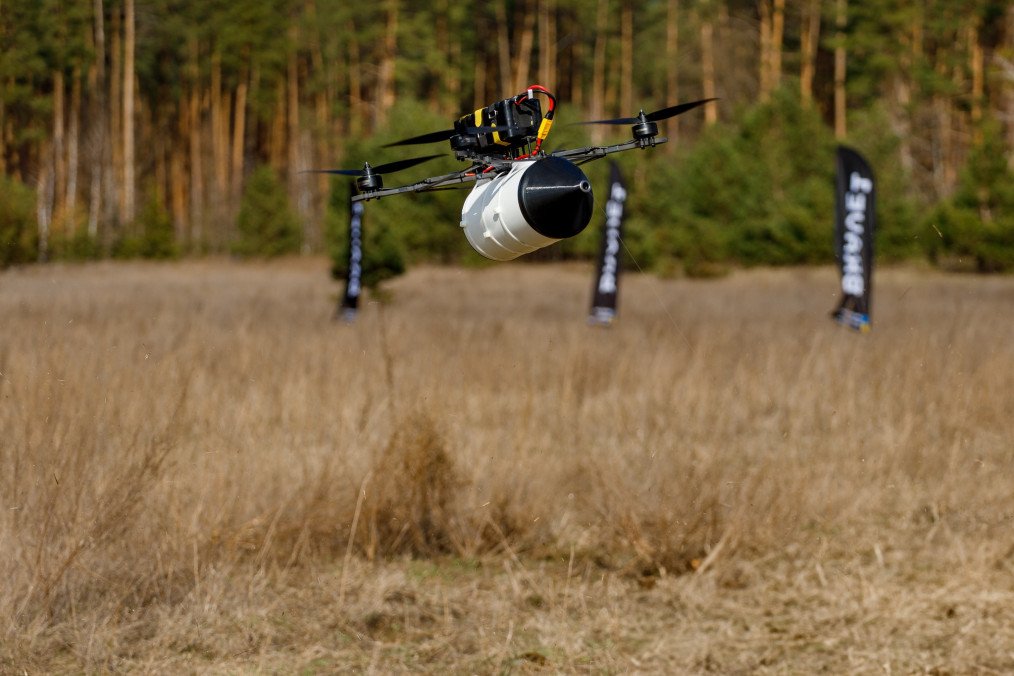Ukraine has conducted successful tests of fiber-optic-controlled FPV drones capable of reaching targets more than 20 kilometers away, according to the state defense technology cluster Brave1 on April 1.
The tests took place at a specialized testing range and were organized by Brave1 with support from Brigadier General Andrii Lebedenko, Deputy Commander-in-Chief of the Armed Forces of Ukraine, and the Innovation Activity Directorate of the Armed Forces.
More than 15 domestic drone manufacturers participated in the trials, which involved navigating a 20-kilometer obstacle route and simulating target engagement.

Previously, FPV drones with traditional radio control had a limited range of 5 to 10 kilometers. The newly tested systems demonstrate significant progress by maintaining stable connection over longer distances through fiber-optic communication. This allows drones to operate beyond the limits of radio horizons and resist radio-electronic interference.
Fiber-optic links do not emit signals, making the drones undetectable by electronic surveillance systems. At the same time, operators receive high-quality visuals and maintain full control of the aircraft throughout its flight.
In parallel, seven manufacturers also tested ground robotic platforms using fiber-optic control.
“Fiber-optics are a game-changer in overcoming communication and electronic warfare challenges,” said Captain Oleksandr Yabchanka, head of robotic systems for the Da Vinci Wolves battalion. “They ensure stable communication unaffected by electronic warfare and allow our platforms to operate at greater distances.”
The test also featured Ukrainian-made fiber-optic modules called Shovkopryad, designed for use on aerial, ground, and maritime drones. Two configurations were presented for FPV drones—one with an integrated warhead and another with a built-in power supply.

FPV drones equipped with Shovkopryad maintain full maneuverability and range beyond 20 kilometers. According to drone operators, there is no operational difference between traditional radio-controlled models and those using fiber-optic systems.
Ukrainian forces are already actively deploying fiber-optic FPV drones in combat operations.
Earlier, Ukraine’s 5th Assault Brigade used a fiber-optic FPV drone to strike a Russian troop shelter hidden inside a water pipeline near Kramatorsk. The drone, guided through the enclosed space by a stable fiber-optic connection, detonated at the enemy position, which had been used for staging and evacuation.






-72b63a4e0c8c475ad81fe3eed3f63729.jpeg)


